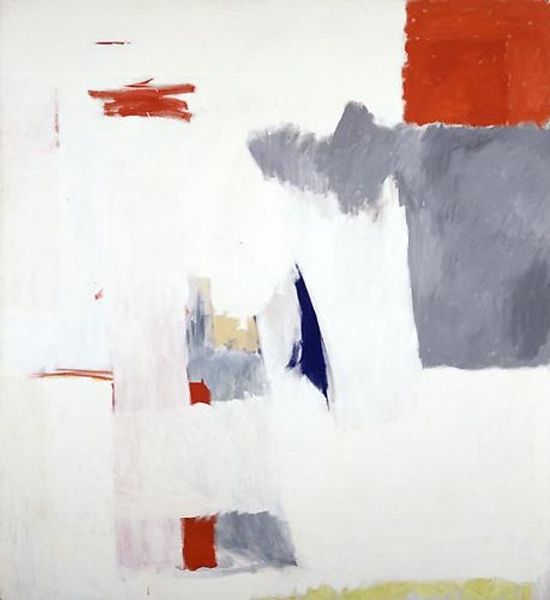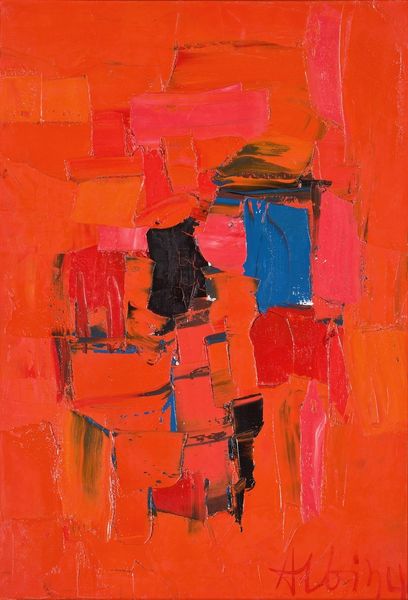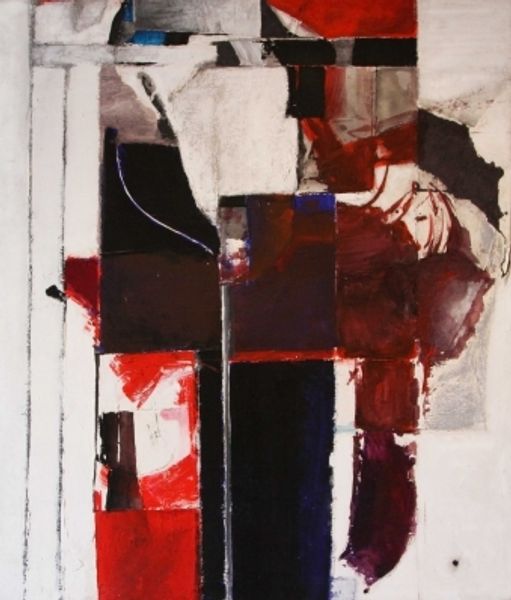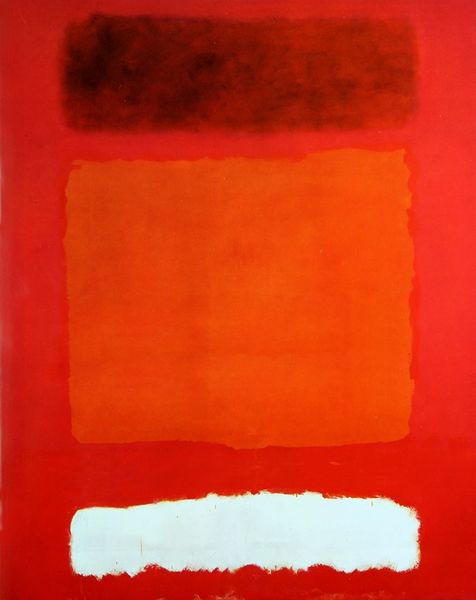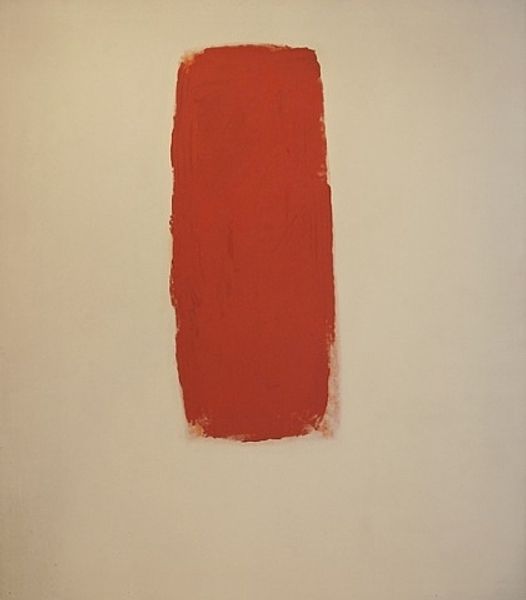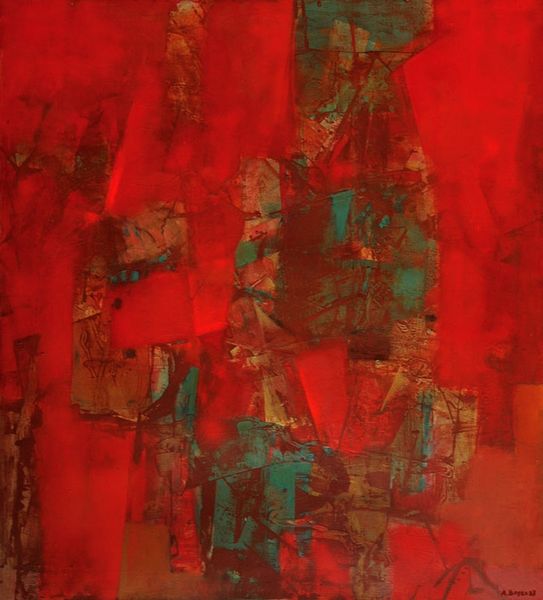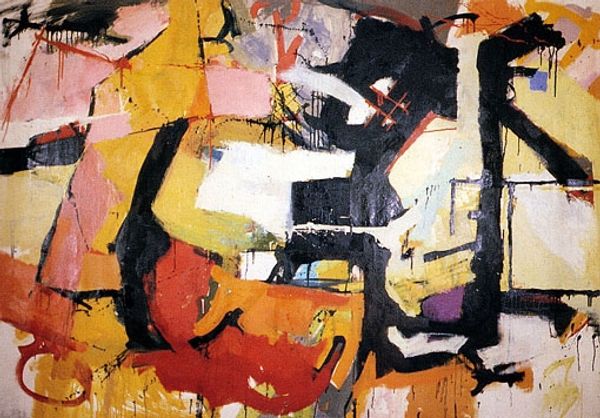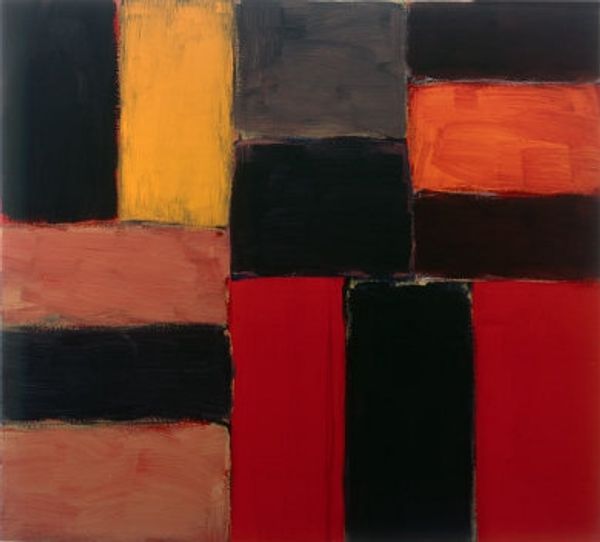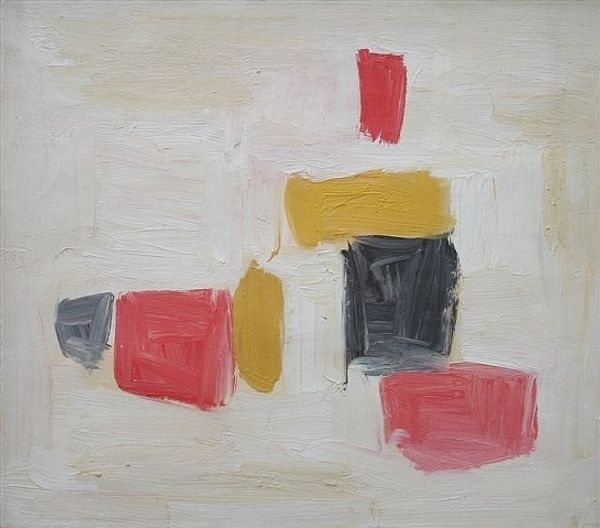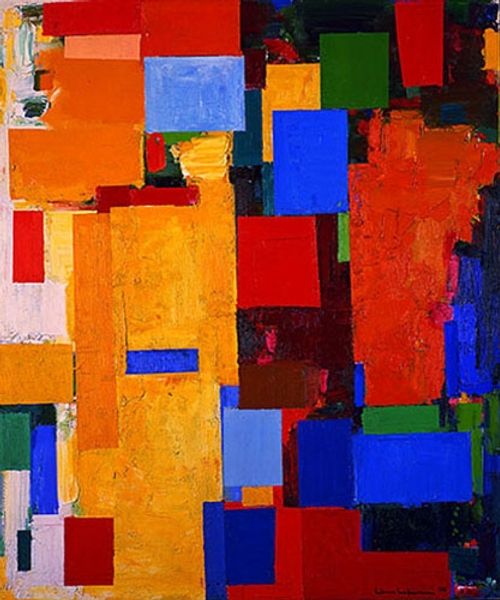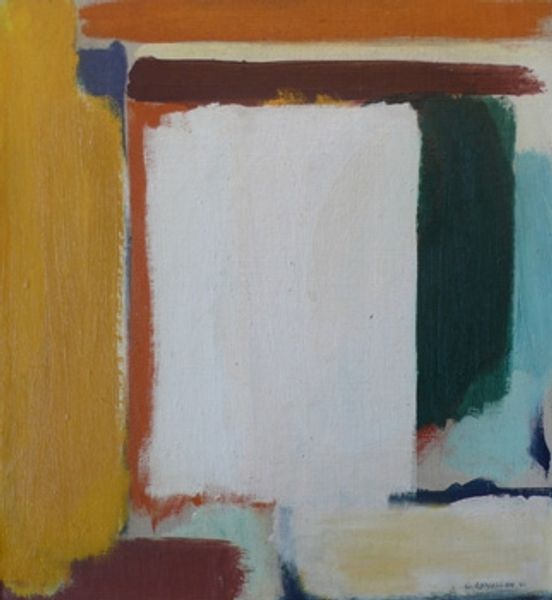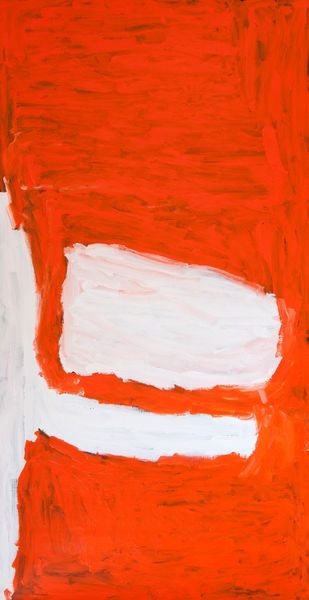
painting, acrylic-paint
#
abstract-expressionism
#
abstract expressionism
#
non-objective-art
#
painting
#
acrylic-paint
#
painted
#
form
#
abstraction
#
abstract art
Copyright: Olga Albizu,Fair Use
Curator: Before us, we have Olga Albizu's "Impression #1" created in 1957 using acrylic paint. It is an intriguing example of Abstract Expressionism from this period. Editor: Intriguing is one word. My first impression is definitely intense. The sheer saturation of red is almost overwhelming, and the texture—I imagine it’s quite rough in person? Curator: Albizu was part of a wave of artists who sought to distance themselves from the representational art often favored by the establishment. Her background in Puerto Rico gave her unique insights into cultural perceptions of identity. Abstract art served to question existing norms by representing feeling instead of depicting people or landscapes. Editor: I can see that questioning through form and color. The dominance of red certainly evokes passion, perhaps even anger, but the shapes – those stark blocks of black and white – introduce a contrasting sense of control, maybe even repression. Do you think that reflects her Puerto Rican roots? Curator: Absolutely. There was a constant dialogue between Puerto Rican artists and those in the mainland United States about how to represent a national identity in an era dominated by American cultural and political influence. Abstract art, like Albizu's work here, provided space for that dialogue outside direct imagery. This specific period also aligns with a crucial shift in arts funding where institutions began heavily investing in abstract work—often displayed prominently to showcase modern perspectives within cosmopolitan, democratic nations. Editor: Fascinating how these sociopolitical contexts influenced artistic expression, like color choices reflecting cultural themes! Now, purely in terms of composition, note the deliberate, almost architectural arrangement of the color blocks. This feels calculated, balanced—is this tension reflecting cultural forces? Curator: Precisely, while seeming chaotic or raw at first glance due to its free gestures—in a historical sense, such gestures and non-objective painting challenged institutions that typically regulated cultural expression—thus contributing towards broader acceptance that shaped the art world itself going forward. Editor: Considering the artwork purely as a statement in paint…it undeniably draws you in. Curator: It makes us reflect not just on visual experience, but the dynamic period of transformation after the war era, where abstract notions allowed individual voices their claim amidst societal transformations taking form.
Comments
No comments
Be the first to comment and join the conversation on the ultimate creative platform.
